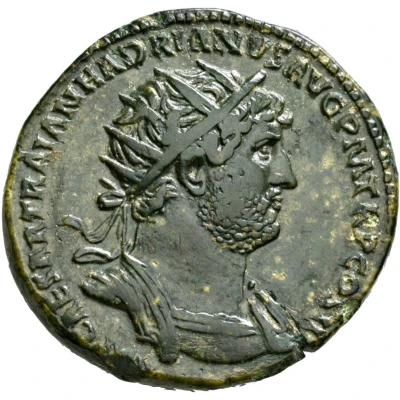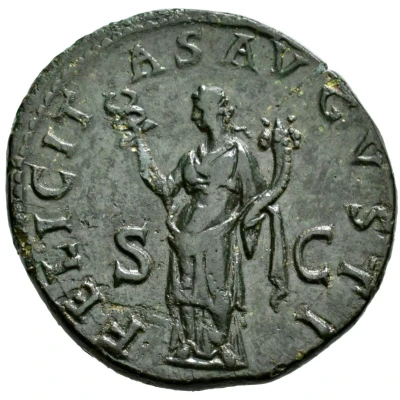Dupondius - Hadrian FELICITAS AVGVSTI S C; Felicitas
| Orichalcum | 12.5 g | 27 mm |
| Issuer | Rome › Roman Empire (27 BC - 395 AD) |
|---|---|
| Emperor | Hadrian (Publius Aelius Hadrianus) (117-138) |
| Type | Standard circulation coin |
| Years | 121-123 |
| Value | 1 Dupondius = ⅛ Denarius |
| Currency | Denarius, Reform of Augustus (27 BC – AD 215) |
| Composition | Orichalcum |
| Weight | 12.5 g |
| Diameter | 27 mm |
| Shape | Round (irregular) |
| Technique | Hammered |
| Demonetized | Yes |
| Updated | 2024-10-06 |
| Numista | N#255164 |
|---|---|
| Rarity index | 100% |
Reverse
Felicitas standing left, holding caduceus and cornucopia.
Script: Latin
Lettering:
FELICITAS AVGVSTI
S C
Translation:
Felicitas Augusti. Senatus Consultum.
The good fortune of the emperor (Augustus). Decree of the senate.
Comment
Source: Online Coins of the Roman Empire (OCRE)Interesting fact
The Dupondius coin featuring Emperor Hadrian and the goddess Felicitas is an interesting artifact from ancient Rome. One fascinating fact about this coin is that it was made of a rare metal called Orichalcum, which was highly valued in ancient times for its durability and golden-like appearance. Orichalcum was a bronze-like alloy composed of copper, zinc, and sometimes tin, and it was used in the production of high-quality coins during the Roman Empire. The use of Orichalcum in the production of coins was a testament to the advanced metallurgical knowledge and craftsmanship of the ancient Romans.

